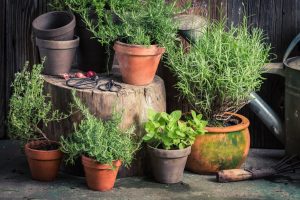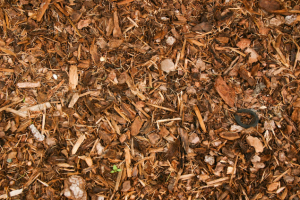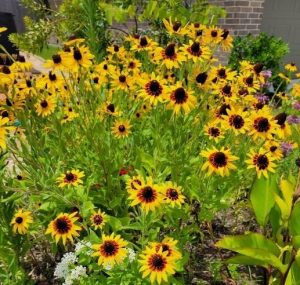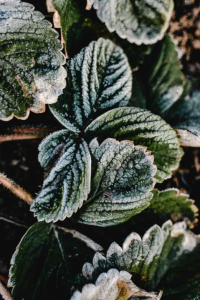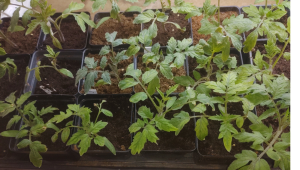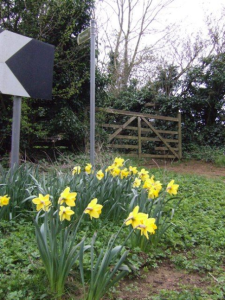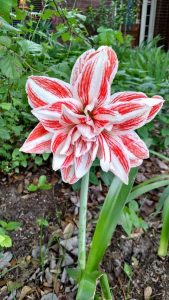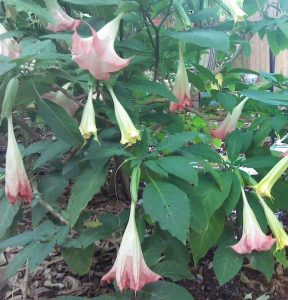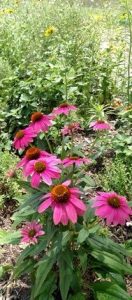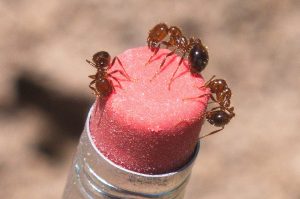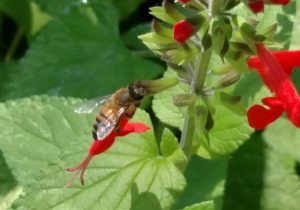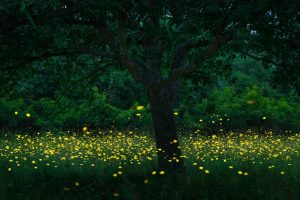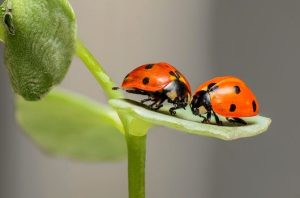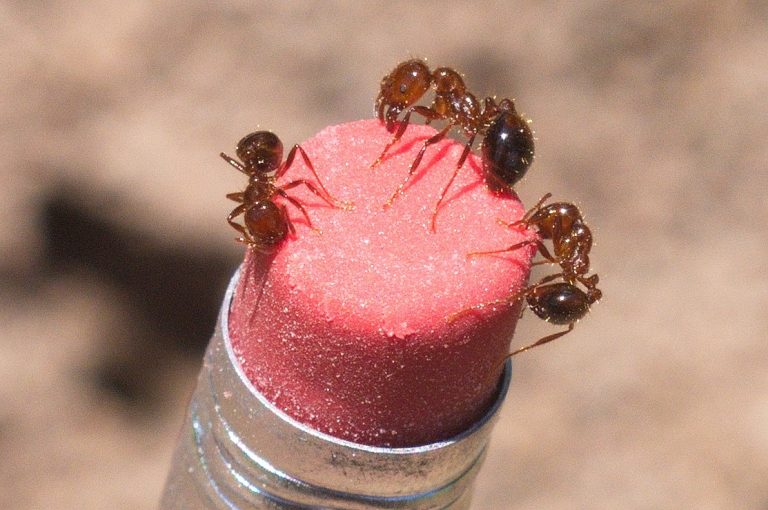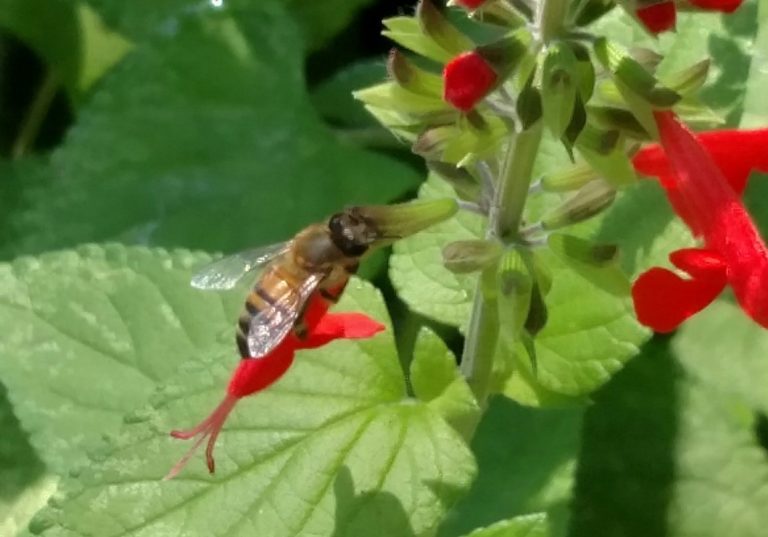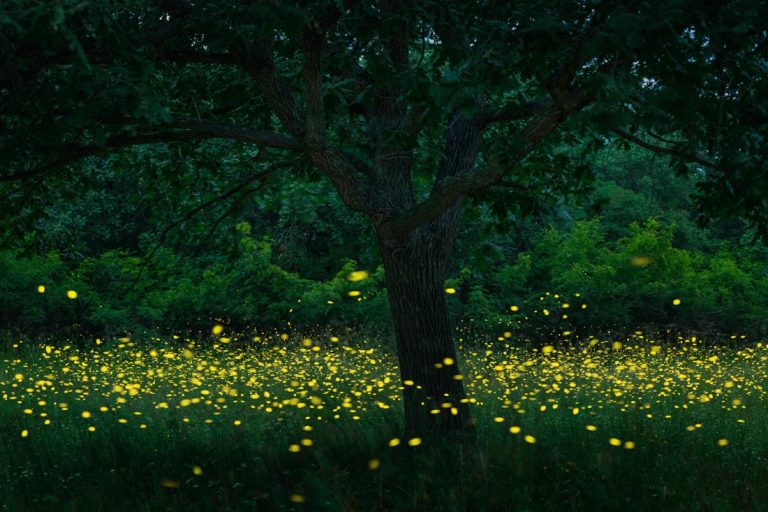And the night-blooming flowers open,
open in the same hour I remember those I love.
In the middle of the viburnums
the twilight butterflies have appeared.
-Giovanni Pascoli, Night Blooming Jasmine
A night-blooming jasmine stands next to my front door. It has bloomed several times this year. The flowers are tiny and not showy. But the wonderful scent…almost overwhelming, greets us in the evening every time we open the door.
Out our bedroom window, a line of eight-foot tall angel trumpets.
Just after dusk and well into the night, sphinx moths and other nocturnal Lepidoptera gather around the fragrant blooms of night-blooming jasmine ( Cestrum nocturnum) and angel trumpets (Brugmansia). Later in the evening, the Mexican long-tongued bat and the lesser long-nosed bat, having traveled thousands of miles from southern Mexico, may fly in and sip nectar from the pungent blooms of both.
The perfumes emanating from these two plants are intoxicating.
Angel Trumpets (Brugmansia
In zones 8 and 9, it is considered a perennial, and may stay green all winter. A cold winter though could freeze it down to the ground. Have no fear, it is a “herbaceous perennial,” which means the root system is probably intact. If it does freeze back, it will probably come back stronger than ever. However, it does equally well in pots, and can be overwintered inside.
Angel trumpets relish sun and will tolerate partial shade. However, there are many specimen plants along the coast which have grown to 10-12 feet in the shade, and some which have grown to 20 feet. Average height is about 6-8 feet high and 5-8 feet wide. Angel trumpets, like all members of the nightshade family, like regular fertilization. Use a slow release, organic fertilizer and apply once a week. They are also foliage feeders. Spray the leaves with fish emulsion or compost tea. Brugmansia like well drained, light, fertile soil, and need to be watered frequently. They bloom spring, summer and fall, and sometimes during mild winters. They are deer resistant.
Night-blooming jasmine (Cestrum nocturnum)
This night-blooming shrub generally grows up to six feet tall (although it can grow up to 13 feet tall if trained. Mine are at least 8 feet) and is a cousin to Angel trumpet. Although the blooms are nondescript, it out-competes Brugmansia in fragrance. Although it does provide an interesting backdrop in the garden, with its green glossy leaves and fanning pattern of its branches, gardeners generally plant it for the fragrance.
Although the plant is not frost tolerant, and might freeze back to the ground in winter, it too is an herbaceous perennial. Unless the winter is exceptionally cold for a prolonged period, it will generally sprout back up from the still-living root system in the spring. Growing the plant indoors, it will bloom all year round, filling the house will its delightful fragrance. Make sure the plant receives enough light, fertilizer and water and is kept in temperatures between 70 and 80 degrees F.
Night blooming jasmine likes sun, but not too much. Planting it in an eastern facing garden where it receives some shade during the afternoon is ideal. The plant also likes water, but not too much. Too much water can rot the roots and encourage mold.
Angel trumpets and night-blooming jasmine are members of the Solanaceae family, which includes nightshade, tomatoes, eggplant, peppers, potatoes, petunias, and tobacco, and should be handled with some care. Angel trumpet contains a powerful hallucinogen and should not be consumed. However, simply handling the plant is not dangerous, and if concerned, wear gloves. They are also poisonous to pets, but no more so than lantana, azaleas, castor bean or moonflower.
Both can be easily rooted from cuttings. A smidgeon of growth hormone on a new growth twig, with the bark shaved at the end, planted in a ½ gallon nursery pot filled with compost will be fine. I’ve started them in winter under a grow light and in the warmer months outside. Keep watered. It will root in a couple of weeks. Start several.
Above all, enjoy these two plants




